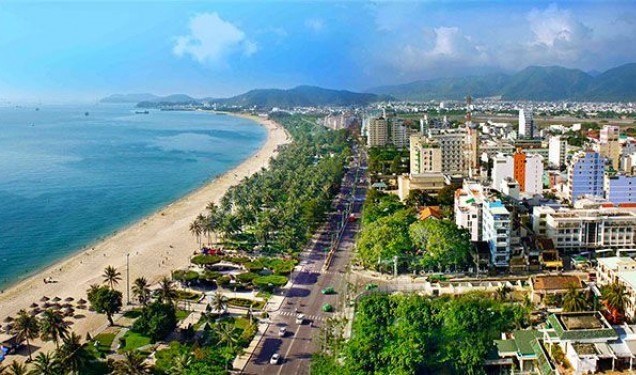
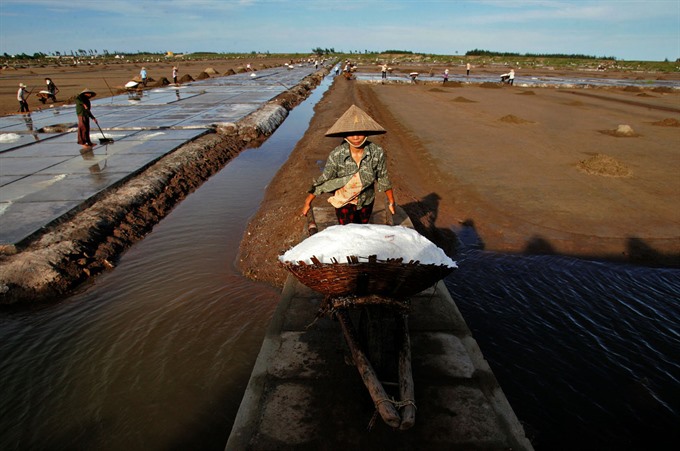 |
| Daily grind: Local farmers work hard to make the salt. — VNS Photo Việt Thanh |
The northern province of Nam Định is famed for its salt producing villages in Hải Hậu, Giao Thủy and Nghĩa Hưng districts.
Before the year 2000, the province had more than 1,000ha of salt fields, tilled by nearly 700 farmers. The salt field area has now reduced to 500ha due to falling salt prices.
Hải Lý Commune in Hải Hậu District has a long history of making salt, and had 90ha of salt field ten years ago, when salt making was lucrative. Yet in the past few years, salt field area has fallen to 20ha as farmers have quit the tough, low-paid work.
Many of them are now planting vegetables and raising fish. Now only 200 people, mainly women, old men or men too weak to fish offshore, work on salt fields.
According to locals, there is only enough bright sunlight to work in the salt fields for about five months a year. The career depends much on the weather while the salt price often fluctuates, leading to unstable lives for salt makers.
The salt making process includes a few steps, which the farmers have to perform under the blazing sun.
First, they submerge sand under seawater, then they dry that sand in a clay yard and when the sand dries, it will form a small amount of salt.
Then farmers use seawater to rinse that sand to get a saltier solution. They dry the solution once more and use saltier salt water to rinse the dried salt to get even more salty water and the let it dry on the cement yard.
After nearly 10 hours, the seawater evaporates to leave pure salt on the cement yard. The farmers then can harvest the salt, which is ready to be used. — VNS
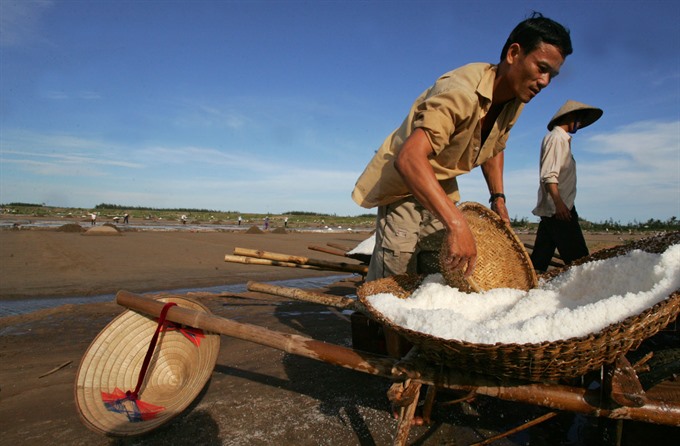 |
| It’s hot out: The work means people have to work under the burning sun. — VNS Photo Việt Thanh |
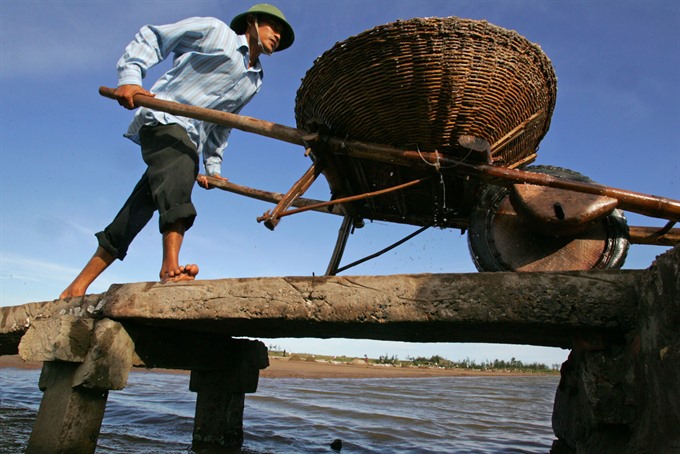 |
| Kicker: Most of the men who work in the salt fields are old. — VNS Photo Việt Thanh |
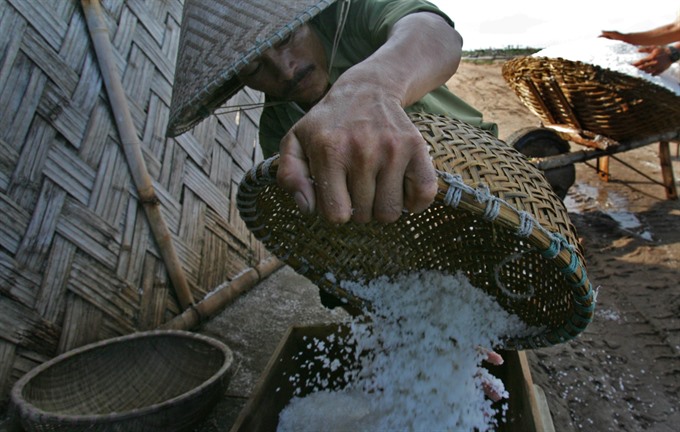 |
| Tough trade: The price of salt has decreased in the past few years. — VNS Photo Việt Thanh |
 |
| Meticulous: Three times dried salt is rinsed in seawater and dried again under the sun. — VNS Photo Việt Thanh |
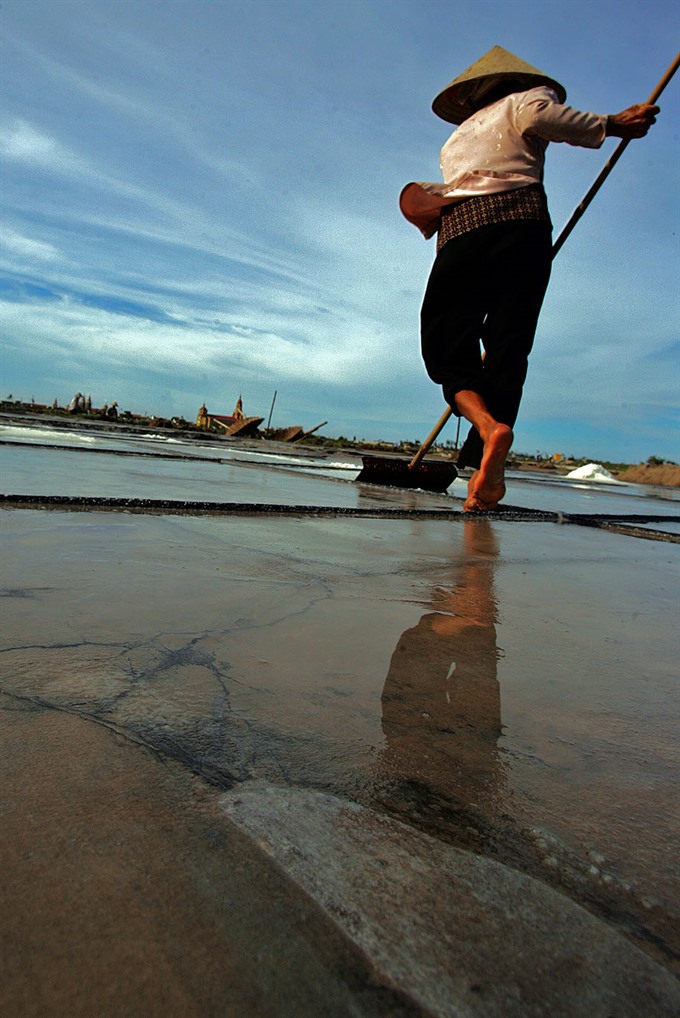 |
| Someone has to do it: The farmers work hard but their income is low. — VNS Photo Việt Thanh |
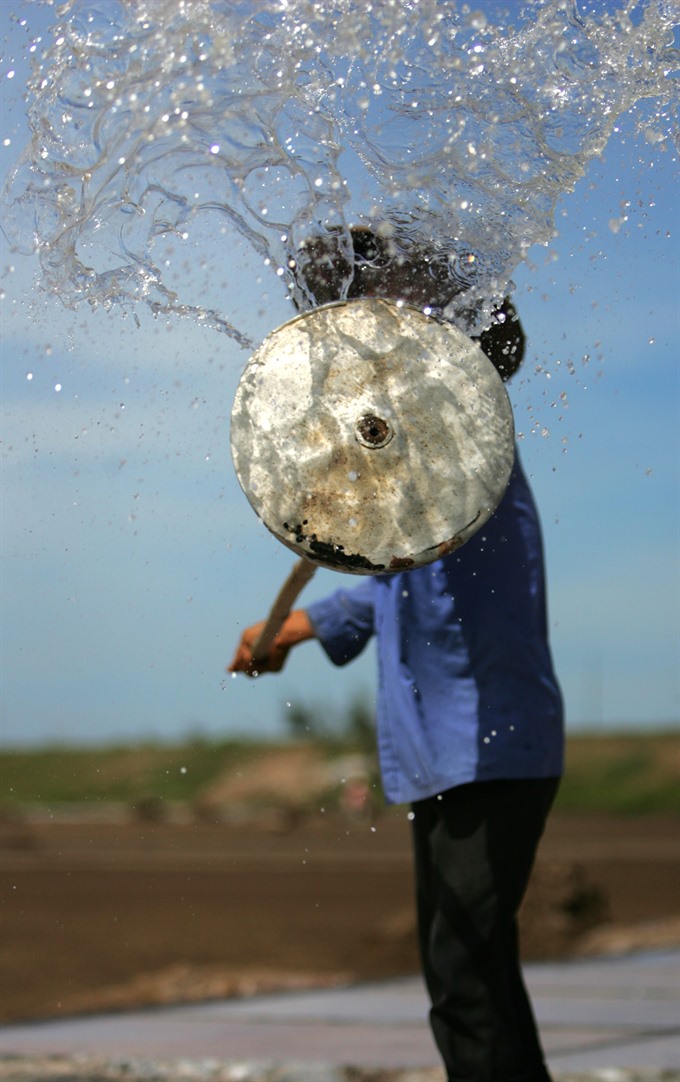 |
| Splash: The farmers can only work on the salt fields for five months a year. — VNS Photo Việt Thanh |



.jpg)





